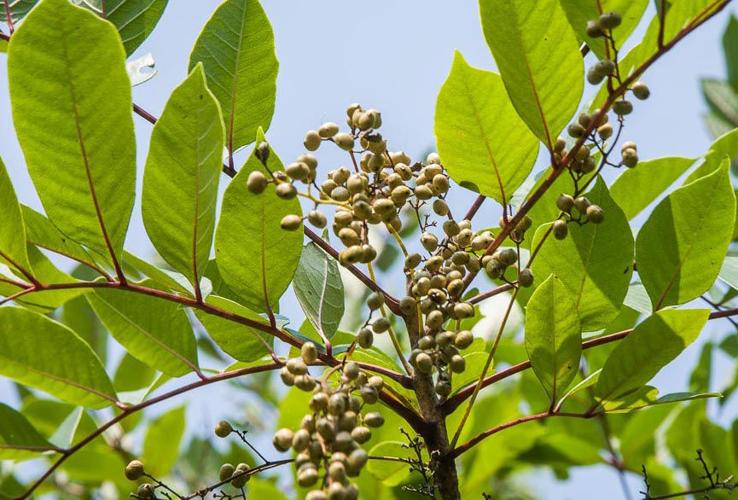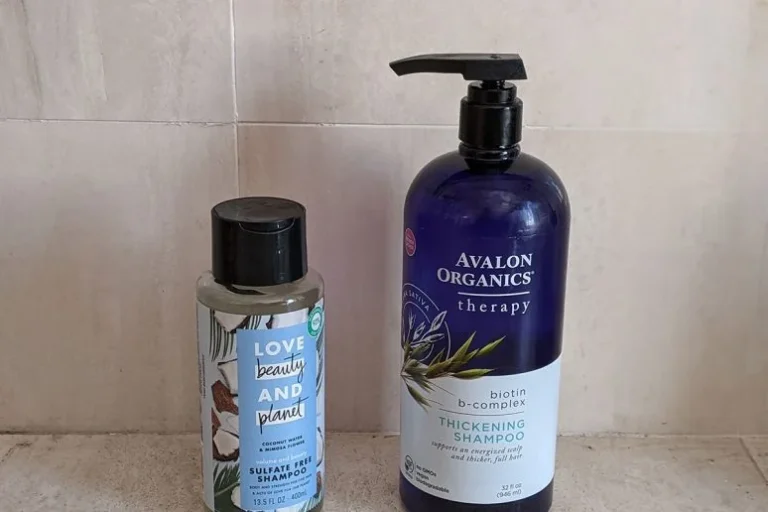Poison sumac, a plant that thrives in wet, wooded areas, can be a source of significant discomfort and health risks for those who encounter it. While often overshadowed by its more famous relatives, poison ivy and poison oak, poison sumac poses unique challenges due to its potent oil, urushiol, which can cause severe allergic reactions. This article will provide an in-depth look at poison sumac, including its characteristics, habitat, effects, prevention, treatment, and more.
What Is Poison Sumac?
Poison sumac (Toxicodendron vernix) is a shrub or small tree found primarily in the eastern United States and Canada. It belongs to the cashew family (Anacardiaceae), which also includes poison ivy and poison oak. Unlike its cousins, poison sumac is not as widely recognized, but it is equally dangerous.
Characteristics of Poison Sumac
Poison sumac can grow up to 10 feet tall and is usually found in wet, swampy areas. Here are some distinguishing features:
- Leaves: The leaves of poison sumac are compound, meaning they consist of multiple leaflets. Each leaf stem can have 7 to 13 leaflets, which are arranged in pairs along a central stem. The leaflets are smooth and shiny, typically turning red in the fall.
- Flowers and Fruits: Poison sumac produces small, greenish-yellow flowers that bloom in late spring. The flowers develop into small, white or gray berries that hang in loose clusters. These berries are toxic and should not be consumed.
- Bark: The bark of poison sumac is smooth and gray, with a somewhat waxy appearance. It can be mistaken for the bark of other trees or shrubs, making identification tricky for those unfamiliar with the plant.
Habitat and Distribution
Poison sumac is commonly found in wetland areas, such as swamps, marshes, and the edges of ponds. It prefers acidic soils and often grows in locations that are flooded or have high moisture content. The plant is primarily found in the eastern United States, particularly in states like New Jersey, Pennsylvania, and the southern regions of Canada.
Understanding Urushiol: The Culprit Behind Allergic Reactions
The primary reason poison sumac is considered hazardous is due to urushiol, a colorless oil present in all parts of the plant. Urushiol is responsible for the allergic reactions that many people experience upon contact with the plant.
What Is Urushiol?
Urushiol is a potent skin irritant that can cause severe rashes and blisters. It is the same oil found in poison ivy and poison oak. Even a tiny amount of urushiol can trigger an allergic reaction in sensitive individuals. Symptoms typically appear within 12 to 72 hours after exposure.
Symptoms of Poison Sumac Exposure
The symptoms of poison sumac exposure can vary from mild to severe and often include:
- Itching: This is usually the first sign of an allergic reaction and can range from mild irritation to intense itching.
- Rash: A red, raised rash can develop, often in streaks or patches where the skin has come into contact with the plant.
- Blisters: In more severe cases, blisters may form, which can ooze and crust over. Scratching the rash can lead to secondary infections.
- Swelling: The affected area may become swollen and inflamed.
When to Seek Medical Attention
While most cases of poison sumac exposure can be treated at home, medical attention should be sought if:
- The rash covers a large area of the body.
- Symptoms worsen or do not improve after a few days.
- The rash affects sensitive areas, such as the face or genitals.
- Signs of infection, such as pus or increased redness, are present.
How to Identify Poison Sumac
Identifying poison sumac is crucial for avoiding accidental contact. Here are some tips for recognizing the plant:
Leaf Identification
As previously mentioned, poison sumac leaves are compound with 7 to 13 leaflets. The leaflets are elongated and smooth, with pointed tips. They grow alternately along the stem, which can be a distinguishing feature from other similar plants.
Flower and Fruit Identification
During late spring, poison sumac produces small, inconspicuous flowers. The greenish-yellow flowers eventually turn into white or gray berries. The presence of these berries is a strong indicator of poison sumac.
Habitat Identification
Poison sumac thrives in wet areas, such as swamps or marshes. If you find yourself in a damp environment with a shrub that matches the above characteristics, exercise caution.
Visual References
When identifying poison sumac, having visual references can be helpful. Numerous online resources and field guides provide images of poison sumac in various stages of growth. Familiarizing yourself with these images can enhance your ability to recognize the plant in the wild.
Prevention: Avoiding Poison Sumac
Preventing contact with poison sumac is essential for avoiding allergic reactions. Here are some strategies to minimize your risk:
1. Know Where to Look
Familiarize yourself with the areas where poison sumac commonly grows. If you’re hiking, camping, or spending time near water bodies, be vigilant about your surroundings.
2. Wear Protective Clothing
If you are in an area where poison sumac is present, wear long sleeves, long pants, and gloves. This creates a barrier between your skin and the plant, reducing the likelihood of contact.
3. Avoid Touching Your Face
If you suspect you’ve come into contact with poison sumac, avoid touching your face, especially your eyes, mouth, or nose. This can help prevent urushiol from spreading to sensitive areas.
4. Clean Up Properly
If you do come into contact with poison sumac, wash the affected area with soap and water as soon as possible. Additionally, wash any clothing or gear that may have come into contact with the plant.
5. Educate Others
Share information about poison sumac with family and friends, especially those who spend time in nature. The more people know about the plant, the better they can protect themselves.
Treatment for Poison Sumac Exposure
If you do experience a reaction after coming into contact with poison sumac, several treatments can help alleviate symptoms:
1. Wash the Affected Area
As soon as you suspect exposure, wash the affected skin with soap and water. This can help remove any residual urushiol before it penetrates the skin.
2. Use Over-the-Counter Remedies
Over-the-counter treatments, such as hydrocortisone cream or calamine lotion, can help soothe itching and reduce inflammation. Antihistamines can also alleviate itching and help you sleep if the rash is bothersome.
3. Take Oral Medications
In more severe cases, oral corticosteroids may be prescribed to reduce inflammation. If the rash is widespread or significantly affecting your daily life, consult a healthcare professional.
4. Avoid Scratching
Resist the urge to scratch the rash, as this can lead to infection. Keep your nails trimmed and consider wearing gloves or bandages to prevent scratching during sleep.
5. Seek Professional Help
If symptoms persist or worsen, or if you develop signs of infection, seek medical attention promptly. A healthcare provider can recommend more potent treatments or interventions.
Poison Sumac vs. Other Plants
Understanding the differences between poison sumac and other similar plants is vital for proper identification and avoidance. Here’s how poison sumac compares to poison ivy and poison oak:
Poison Ivy
- Appearance: Poison ivy typically has three leaflets, whereas poison sumac has multiple leaflets (7-13).
- Growth Habit: Poison ivy can grow as a vine or shrub, while poison sumac usually grows as a shrub or small tree.
- Habitat: Poison ivy is more adaptable and can be found in various environments, including dry areas, while poison sumac prefers wet, swampy regions.
Poison Oak
- Appearance: Poison oak also has three leaflets but can resemble oak leaves. Its leaf edges are often lobed, unlike the smooth edges of poison sumac’s leaflets.
- Growth Habit: Poison oak can grow as a shrub or vine, similar to poison ivy.
- Habitat: Poison oak is more common in the western United States, while poison sumac is mainly found in the eastern regions.
Conclusion: Stay Informed and Safe
In summary, poison sumac is a hazardous plant that can cause severe allergic reactions due to its urushiol oil. By understanding its characteristics, habitat, and how to identify it, you can better protect yourself and those around you from its harmful effects. Prevention and prompt treatment are crucial in managing exposure. With the right knowledge and precautions, you can enjoy nature while staying safe from poison sumac.
Additional Resources
For further information, consider exploring the following resources:
- Local extension services or agricultural departments, which often provide valuable information on identifying and managing poisonous plants.
- Educational websites focused on botany and plant identification, which may have detailed guides and images to help with identification.
By staying informed and vigilant, you can minimize your risk of encountering poison sumac and enjoy the beauty of nature safely.













